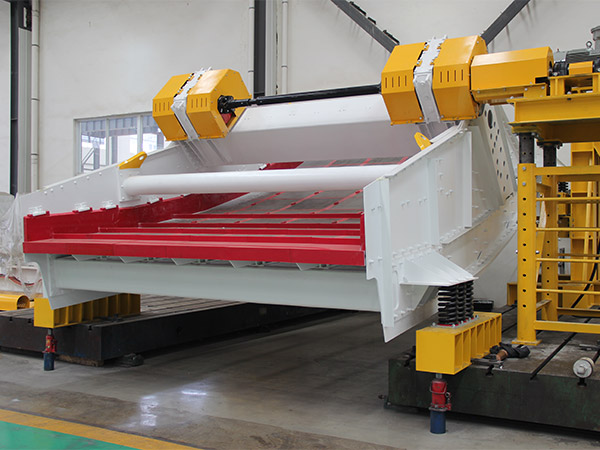A linear vibrating screen is a type of vibrating screen machine used for screening and grading materials in various industries. It employs a linear motion to convey materials along the vibrating surface, providing efficient and effective screening of granular and bulk materials. Here’s a detailed introduction to the linear vibrating screen.
Key Components of a Linear Vibrating Screen

Screen Surface
The screen surface is the primary component where the material separation takes place. It is typically made of wire mesh or perforated plates with specific opening sizes to allow particles of desired sizes to pass through.
Vibrator Motors
The linear vibrating screen is equipped with one or multiple vibrator motors that generate the vibration required for material movement. These motors are mounted on the screen frame and provide the necessary linear vibration.
Screen Frame
The screen frame supports the screen surface and vibrator motors. It is designed to withstand the dynamic forces generated during the screening process. The frame may be constructed from steel or other materials depending on the application.
Springs or Rubber Mounts
To isolate the vibrations generated by the vibrator motors, linear vibrating screens often use springs or rubber mounts. These components absorb and dampen the vibrations, preventing excessive transmission to the supporting structure.
Feed Inlet and Discharge Chutes
The linear vibrating screen has designated areas for material entry (feed inlet) and exit (discharge chute). The material is usually fed onto the screen surface through the feed inlet, and the screened material exits through the discharge chute.
Drive Unit
The drive unit includes the motor(s), which generate the linear vibration, and may also include other components like belts or gears depending on the specific design of the linear vibrating screen.
Operating Principle

Vibration Generation
The vibrator motors generate linear vibrations that cause the screen surface to move along a straight line. This motion helps convey and separate the material based on size.
Material Feed
Material is introduced onto the vibrating screen surface through the feed inlet. The linear motion of the screen surface moves the material along the length of the screen.
Screening Process
As the material travels along the vibrating surface, particles that are smaller than the openings in the screen pass through, while larger particles are retained. This process effectively separates materials into different size fractions.
…
For more detailed information about linear vibrating screen, please click to visit: https://www.hsd-industry.com/news/introduction-to-linear-vibrating-screen/



